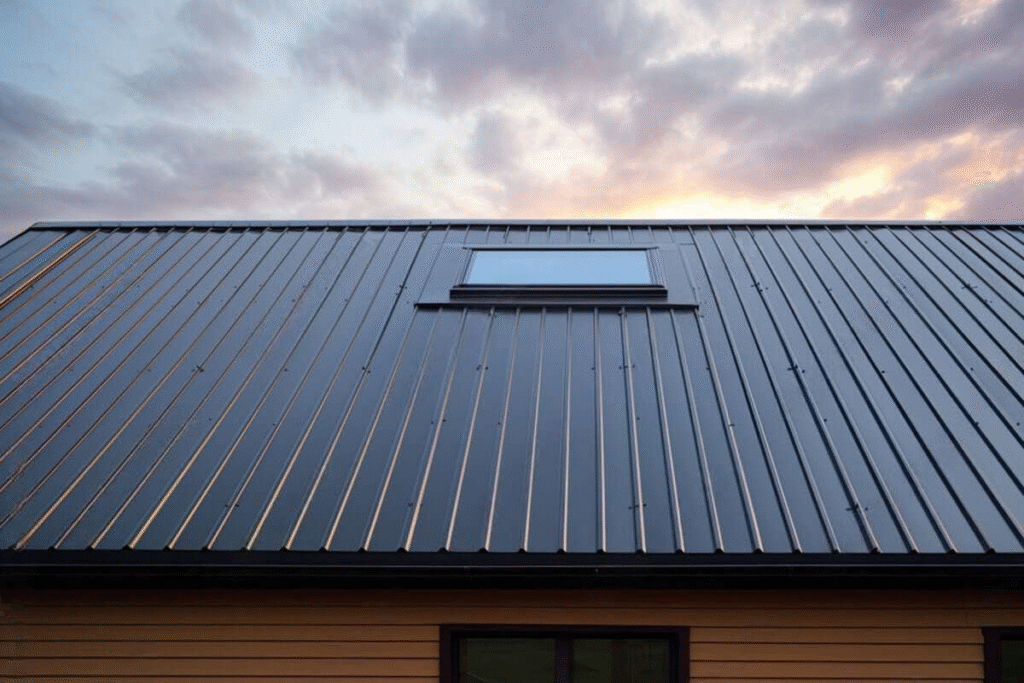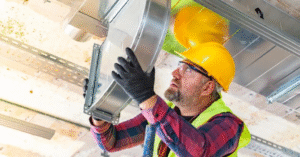Is Your Roof Trying to Tell You Something? Spot Problems Before They Cost You
Most roofs don’t collapse all at once, no tiles bursting into the air, no metal sheets flapping like storm sails (well, unless you’ve let it alone for years).
Instead, they whisper. Subtle clues. A drip here, a stain there. And if you hear those whispers before it’s too late, you can save yourself thousands.
Let’s discuss how to listen to what your roof is saying.

1. The Ceiling Stain That “Just Appeared”
It’s Saturday morning. You’re making coffee. You glance up and spot a very light brown smudge on the ceiling.
Your first reaction: “Odd, I’ll keep an eye on it.”
Your follow-up question, two months after that, is “Why is my ceiling bulging?”
A single water stain can be caused by a cracked tile, rusty bolt, or cracked flashing. The water doesn’t necessarily trickle down straight, it can run along rafters and pop up in unexpected places. And by the time it shows up inside, it’s been seeping in for weeks.
Lesson: treat any ceiling mark as an advance warning sign, and not merely as a harmless mark.
2. Gutters That Overflow in Light Rain
Gutters overflowing after a storm? That’s probably to be expected. But if your gutters are overflowing during a light rain, there’s something going on.
It may be sagging gutter runs, rusty pieces, or tree trimmings nearby that’s accumulated so long it’s compost.
Water that accumulates on your eaves isn’t just bad for paint — it also has the potential to seep under your roof and into your walls. In wood-framed homes, that’s a free pass to rot.
3. Shingles, Tiles, or Screws Going AWOL
When you wake up one day to find a roof tile in your backyard after a windy night, don’t dismiss it and throw it away. That is your roof shedding a piece of its defence.
In Melbourne’s older suburbs, you can find tiles untouched since the 1960s. They will crack, slip, or just disintegrate with time.
Metal roofs aren’t off the hook either, screws can back out, washers perish, and panels lift in high winds. One missing fastener can lead to a loose sheet that rattles, leaks, and eventually needs replacing.
4. Mould or Mildew That Keeps Coming Back
Bathrooms are mould magnets, no question. But if mould keeps coming back in corners far removed from the plumbing, it might be your roof.
Warm air and a slow drip inside your home are the ideal recipe for mildew. Worst case, the insulation gets wet, retaining moisture above your ceiling.
Before you’re even aware that you have a musty odor, the damage may be far greater than you can see.
5. Light Where There Shouldn’t Be Light
This is easy. Go up into your attic in daylight, turn off your flashlight, and just look around.
If sunlight is visible where it is not supposed to be, water also starts leaking in there. The cracks could be because of slipped tiles, lifted ridge caps, or timber shrinkage.
It’s an inexpensive check, and you might detect a problem long before it leaks.
Why Roofs in Melbourne Have Their Own Set of Problems
Climate is a big player in roof wear and tear. And roofing in Melbourne has its quirks.
We get scorching summers that can bake tiles and warp metal sheets. Then the temperature drops and the rain sweeps in sideways. Throw in hail, the occasional freak windstorm, and a few eucalyptus trees dropping leaves and sticks — and you’ve got a recipe for regular maintenance.
Homes near the coast cop salt spray that speeds up rust. Older terrace houses closer to the city may have heritage-style roofs that need specific materials and methods.
And yes — local trades have seen it all.
How Roof Problems Differ by Area
If you asked three different homeowners in different suburbs, you’d hear three different roof horror stories.
- Inner West Sydney terraces often struggle with narrow access, meaning repairs take longer and require more careful planning.
- Manly and other coastal homes face constant salt corrosion on metal roofing.
- Castle Hill and leafy suburbs deal with endless leaf litter blocking valleys and gutters.
For roofers in Melbourne, one common headache is rapid weather swings — sunny in the morning, storming by 3 pm. Repairs need to be done quickly and securely to handle those sudden changes.
DIY Roof Checks vs. Calling the Pros
You can do basic roof checks yourself:
- Walk around your property with binoculars and scan for missing or cracked tiles.
- Check your gutters for shingle grit (a sign your tiles are deteriorating).
- Inspect the roof space for damp insulation or daylight peeking through.
But climbing onto a roof without the right gear is risky. Even a low pitch can be slippery after a dew or light rain. Plus, without training, you might miss a small defect that’s actually a big deal.
How Catching Issues Early Saves Big Money
Imagine your roof as a car. Neglect a minor oil leak, and you’ll be replacing an engine.
A broken tile replaced today may set you back less than a two-person dinner. Leave it alone and you are facing damp insulation, crushed ceilings, and the cost of repainting — quickly into the thousands.
It’s not intimidation; it’s the reality roofers face on a weekly basis.
Real-Life “Wish I’d Called Earlier” Stories
One Melburnian noticed a puddle of wetness in the lounge corner but ascribed it to “probable condensation.” Months down the track, their entire ceiling collapsed during a storm. The leak? One fractured ridge tile.
Another thought their metal roof “just made noises in the wind.” Half the screws on one end had loosened, and the sheet was hanging by chance. The next good gust of wind would’ve curled it back like a sardine can.
Little indicators tend to refer to large issues, but you have to understand what to look for.
Seasonal Roof Check Tips
Here’s a simple rule: check your roof twice a year — once before summer heat, and once before winter rains.
Spring:
- Clear gutters of autumn leaves.
- Check for loose ridge caps or cracked mortar.
Autumn:
- Look for damage after summer heat (warped sheets, brittle tiles).
- Trim back overhanging branches before winter storms.
And after any big storm, even if your roof “looks fine,” take a closer look. Wind can lift flashing or tiles without obvious signs from the ground.
The Takeaway
Your roof won’t send you an email when it’s in trouble. It’ll send subtle hints — stains, drips, mould, and the occasional loose tile in your garden.
By paying attention, doing regular checks, and getting problems fixed early, you can avoid the gut-wrenching cost of major repairs.
And whether you’re dealing with rust, slipped tiles, or hail damage, local experience matters. That’s why seasoned roofers Melbourne homeowners trust are used to working with our unpredictable weather and diverse housing styles.
So, next time you hear a drip or see a stain — don’t ignore it. Your roof is talking. Listen before it starts shouting.










Post Comment